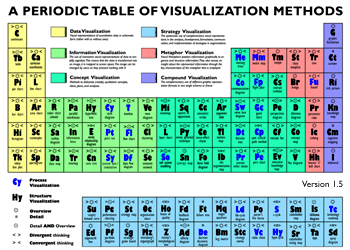Included in Stephen Few’s very interesting visualization blog (perceptual edge) is the provocatively titled “Save the Pies for Dessert” post. Pie charts are notoriously bad for perceptually judging magnitude. Here is an annotated excerpt from Few’s post, giving just one example of how hard it can be to judge scale using pie charts…
Not everyone hates pie charts, though…for example, here is a blog post from “Junk Charts” on the downside of discouraging pie charts.
Bonus: An amusing pie chart which shows the shadow illusion featured in the Categories question is this fascinating little image. Once you see the pyramid, you cannot unsee it:

I did not manage to identify the original maker of this -sort of- meme at this point, if you know, please tell me in the comments. Image above is copied from Rebecca Barter here: http://www.rebeccabarter.com/blog/2015-07-23-pie/




